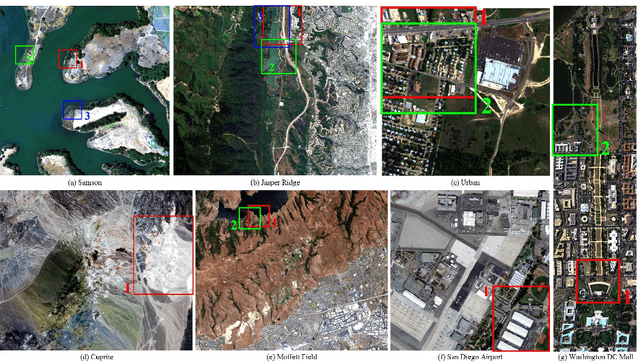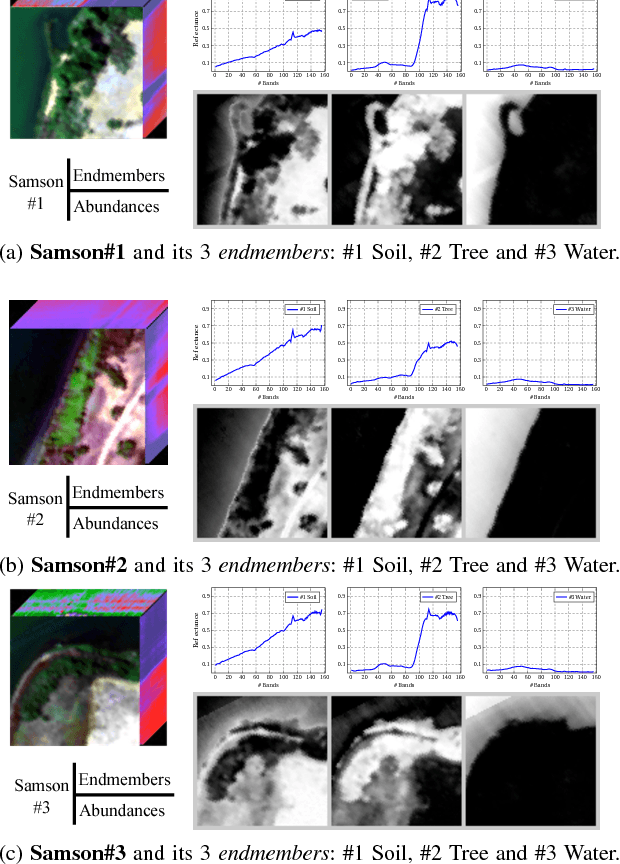Hyperspectral Unmixing: Ground Truth Labeling, Datasets, Benchmark Performances and Survey
Paper and Code
Oct 11, 2017



Hyperspectral unmixing (HU) is a very useful and increasingly popular preprocessing step for a wide range of hyperspectral applications. However, the HU research has been constrained a lot by three factors: (a) the number of hyperspectral images (especially the ones with ground truths) are very limited; (b) the ground truths of most hyperspectral images are not shared on the web, which may cause lots of unnecessary troubles for researchers to evaluate their algorithms; (c) the codes of most state-of-the-art methods are not shared, which may also delay the testing of new methods. Accordingly, this paper deals with the above issues from the following three perspectives: (1) as a profound contribution, we provide a general labeling method for the HU. With it, we labeled up to 15 hyperspectral images, providing 18 versions of ground truths. To the best of our knowledge, this is the first paper to summarize and share up to 15 hyperspectral images and their 18 versions of ground truths for the HU. Observing that the hyperspectral classification (HyC) has much more standard datasets (whose ground truths are generally publicly shared) than the HU, we propose an interesting method to transform the HyC datasets for the HU research. (2) To further facilitate the evaluation of HU methods under different conditions, we reviewed and implemented the algorithm to generate a complex synthetic hyperspectral image. By tuning the hyper-parameters in the code, we may verify the HU methods from four perspectives. The code would also be shared on the web. (3) To provide a standard comparison, we reviewed up to 10 state-of-the-art HU algorithms, then selected the 5 most benchmark HU algorithms, and compared them on the 15 real hyperspectral datasets. The experiment results are surely reproducible; the implemented codes would be shared on the web.
 Add to Chrome
Add to Chrome Add to Firefox
Add to Firefox Add to Edge
Add to Edge